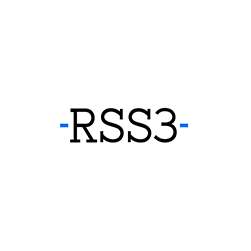The Crossroads of DeSci: the Choice Is Ours to Make | Opinion
Disclosure: The views and opinions expressed here belong solely to the author and do not represent the views and opinions of crypto.news’ editorial.
Following CZ and Vitalik’s glistening endorsements of decentralized science (DeSci) in the last few months, the movement has been revived and is being hailed as the next great frontier in web3. DeSci promises to democratize research funding, enhance transparency, and create global open collaboration. The idea is tantalizing: a blockchain-powered transformation of the scientific process that bypasses the inefficiencies and biases of traditional, centralized funding systems.
You might also like: Decentralized science is modernizing outdated systems | Opinion
But for all its promise, DeSci today is at a perilous crossroads, at risk of collapsing under the weight of its own immaturity and short-termism.
Despite some promising initiatives, such as VitaDAO’s longevity research and BIO Protocol’s DAO-driven funding for niche medical projects, the current state of DeSci, unfortunately, is characterized more by speculation than by meaningful, sustainable progress. Too many projects are focused on cash grabs and quick wins, fueled by flashy claims about solving complex problems within impossibly short timelines. This is exemplified by platforms like Pump.fun, which gamifies drug development with tokenized experiments tied to compounds.
Science doesn’t work this way. The process of discovery, specifically drug development, is painstakingly slow, staggeringly expensive, and relies on years of collaboration across institutions. Yet DeSci has become a playground for quick financial opportunities rather than a vehicle for advancing meaningful research.
This isn’t the revolution the industry needs; it’s a distraction
What’s worse is that the allure embedded in the speculative nature of DeSci risks undermining the trust and credibility essential for scientific progress. Crypto investors, drawn to the promise of onchain science—an idea that feels futuristic and transformative, even if the mechanisms underlying it are rudimentary and underdeveloped—are repeating patterns seen in the AI and EV investment booms. This trend is emblematic of a broader behavior within the crypto community, where success is often measured by how quickly an investment “rips upwards” rather than the quality or feasibility of the underlying project.
Much like AI tokens that surged without meaningful differentiation, DeSci is becoming a catch-all for speculative capital. For many, the focus is not on advancing science but on crafting a narrative to inflate token valuations.
What is crucial is an understanding of what good science is all about
Good science is anything that improves our knowledge in a meaningful way. Right now, what tends to be considered meaningful is what is monetizable—but this is an incomplete metric. The short answer is that good science is anything that increases our knowledge, and the best way of doing that is by expanding our knowledge perspectives. Research in areas like longevity, climate science, and rare diseases exemplifies this by pushing the boundaries of what we know while offering real-world applications.
Accuracy is fundamental, yet much of science today is failing in this regard. For research to be worth investing in, it must be credible, rigorous, and impactful. However, the impact cannot simply be measured in financial terms—it must reflect real contributions to the body of scientific knowledge. This should be a key measure of success, reinforcing that science, at its core, relies on credibility. If DeSci continues to be synonymous with hype, hollow promises, and speculative trading, it will never onboard the very researchers, institutions, and policymakers it needs to succeed. This isn’t just a loss for DeSci; it’s a loss for science and society as a whole.
This is not to dismiss the incredible potential of DeSci. The reliance on market mechanisms is often touted as a strength of DeSci, and it’s easy to see why. Science is fundamentally about generating, validating, and disseminating information—a process that aligns naturally with the emerging concept of information markets. These markets leverage decentralized tools like prediction markets, quadratic funding, and transparent peer review to aggregate knowledge, incentivize collaboration, and allocate resources efficiently. These mechanisms could address many inefficiencies in traditional systems, but they are currently underdeveloped or misused in DeSci, treated more as speculative instruments than engines for meaningful innovation.
Prediction markets, for instance, could enable stakeholders to bet on the success of scientific experiments or hypotheses, aggregating collective intelligence to guide funding toward high-potential projects. However, their effectiveness depends on rigorous, well-validated hypotheses rather than hype-driven speculation. If structured properly, prediction markets could serve as a tool to prioritize research that is accurate and impactful, rewarding projects that meaningfully expand scientific understanding rather than those that simply attract attention.
Looking to quadratic funding, this could amplify grassroots support for unconventional ideas, leveling the playing field for underrepresented researchers and niche fields. However, for it to be truly valuable, it must be directed toward projects that enhance our knowledge perspectives rather than those that are simply popular or financially promising. Meanwhile, a decentralized peer review system could transform the opaque, slow, and biased centralized academic publishing process into one that is transparent, accountable, and accessible. By incentivizing rigor and rewarding contributions, these tools could align perfectly with DeSci’s ethos of openness and collaboration.
The interplay of these tools within the broader framework of web3’s information markets is where DeSci’s true potential lies. At its best, DeSci could be a revolution. It could democratize access to research funding that is incredibly hard to come by, empower marginalized voices, and create an ecosystem where breakthroughs happen faster and benefit more people. But realizing this vision requires more than technology—it demands a shift in priorities and culture. DeSci must move beyond its current fixation on speculative tokens and cash-grab projects, embracing the principles of sustainability, accountability, and collaboration that underpin meaningful progress.
DeSci is at a crossroads. It can continue down its current path, chasing speculative highs and risking irrelevance. Or it can take a harder but more meaningful road—one that prioritizes substance and sustainability over spectacle and short-term wins. The choice is ours to make, but the time to act is now. Science deserves better, and so does DeSci.
Read more: From lab to ledger: Human keys secure scientific integrity | Opinion
Author: Ciarán Murray
Ciarán Murray is a seasoned veteran of the blockchain industry with a background in media and distributed technologies. He holds an MSc in Politics & Government in the European Union from the London School of Economics and a BA in Economics and Sociology from Trinity College Dublin.
Certora Levels the Playing Field, Open-Sourcing Prover for DeFi Security
Certora, a leading blockchain security platform, has open-sourced its most advanced formal verification engine, Certora Prover, to make smart contract security more accessible for everyone in the crypto sector.
This move from Certora couldn’t have come at a better time as hackers proliferate the digital asset space and steal funds.
“Security remains one of the biggest challenges in Web3. DeFi projects spend millions on audits and often take over a year to launch, yet vulnerabilities continue to put billions of dollars at risk,” remarked Certora CTO Shelly Grossman, adding, “While high-profile exploits have become less frequent, securing smart contracts remains expensive and out of reach for many developers. That changes today.”
Data from blockchain analysis firm Chainalysis reveals that a whopping $2.2 billion was stolen by hackers in 2024, which is an increase of 21% from a year ago. Not only has the dollar amount surged, but so has the number of incidents.
As the crypto adoption rises, gaining traction among both retail and institutions, and the market booms with the total cryptocurrency market cap sitting above $3 trillion, bad actors are certainly multiplying. These cybercriminals are adopting increasingly sophisticated methods and broadening their scope by exploiting weaknesses in smart contracts, which are the backbone of protocols and the DeFi ecosystem.
Against this backdrop, Certora is offering a powerful solution to DeFi developers, which identifies all possible bugs and then proves their absence. By supporting multiple popular chains, viz. Ethereum (EVM), Solana (sBPF), and Stellar (WASM), Certora ensure that the vast majority of the crypto space is protected against smart contract attacks.
Prover is Certora’s flagship security product, which utilizes formal verification to catch the hardest and rarest bugs. In production for “a long time,” the tool is finally released to the general public.
The Certora Prover essentially acts as an automated mathematical auditor, analyzing smart contract code and developer-defined rules to provide proof of correctness. This way, it goes beyond limited scenarios, evaluating every possible case. Developers have already written over 70,000 verification rules.
It was actually with the help of Certora’s formal verification technology that a fundamental flaw in MakerDAO’s DAI equation, which has been undetected since 2018, was finally caught. Findings like this show that even multiple audits can’t fully remove the vulnerabilities of a smart contract, but a formal verification can help uncover them.
With this tool, Cetora has also been helping the likes of Aave, Uniswap, Lido, EigenLayer, Solana Foundation, and many others protect tens of billions of dollars in TVL.
However, Certora had its code closed-sourced all this time, which is finally changing in a move to offer all the developers in Web3 a strong tool for absolutely free to make sure that their smart contracts are secure, transparent, and community-driven.
“Smart contract security should not be a privilege reserved for well-funded teams or highly educated people. Open-sourcing the Certora Prover is a step toward making bulletproof smart contracts the norm,” said Certora CEO Mooly Sagiv.
Freely available for all, Certora is currently inviting developers, security researchers, and the Web3 community to employ the solution to verify their smart contracts and help advance its efforts to make DeFi secure.


 最低價
最低價 最高價
最高價 















































